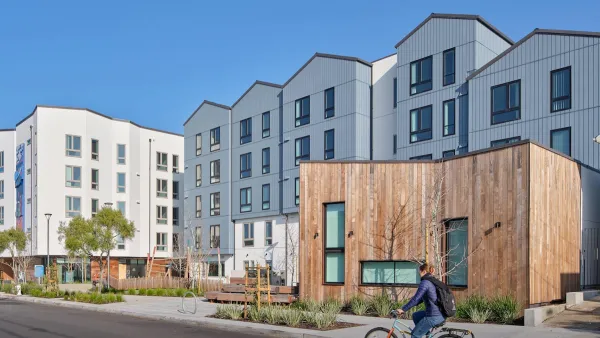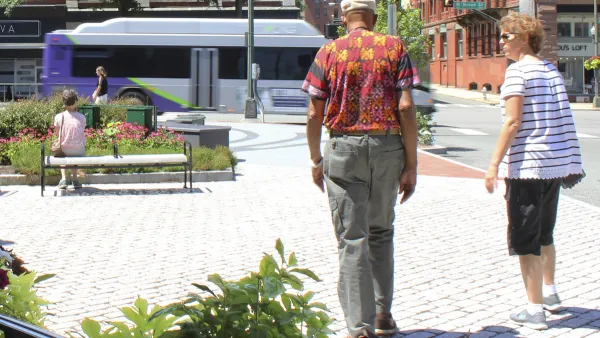State transportation officials, the president of the University of Maryland, and a local city councilmember agree: a barrier on the median of Route 1 in College Park is the way to curtail a tragic rash of pedestrian deaths on the corridor.
Jamie Forzato reports that the Maryland State Highway Administration (SHA) has announced plans to improve pedestrian safety along Route 1 near the University of Maryland, where three pedestrians have been killed this year.
The primary changes under consideration: a median barrier, speed limit reduction, and light synchronization.
"University of Maryland President Wallace Loh recommended SHA, which owns and maintains the highway, approve a median barrier along Route 1 from Knox Road to Guilford Road -- a three-block stretch that is home to several popular bars and restaurants that get a high level of foot traffic on weekend nights."
Resistance to the idea so far arises from concerns that the barrier might be unsightly.
The jury is still out on the speed limit reduction, at least from the state's standpoint. "Officials also want the speed limit reduced from 30 to 25 miles per hour. WTOP has learned the state has completed a speed limit study of the area, but hasn't released the results yet."
FULL STORY: Big changes coming to Route 1 in College Park

Planetizen Federal Action Tracker
A weekly monitor of how Trump’s orders and actions are impacting planners and planning in America.

San Francisco's School District Spent $105M To Build Affordable Housing for Teachers — And That's Just the Beginning
SFUSD joins a growing list of school districts using their land holdings to address housing affordability challenges faced by their own employees.

The Tiny, Adorable $7,000 Car Turning Japan Onto EVs
The single seat Mibot charges from a regular plug as quickly as an iPad, and is about half the price of an average EV.

Austin's First Single Stair Apartment Building is Officially Underway
Eliminating the requirement for two staircases in multi-story residential buildings lets developers use smaller lots and more flexible designs to create denser housing.

Atlanta Bus System Redesign Will Nearly Triple Access
MARTA's Next Gen Bus Network will retool over 100 bus routes, expand frequent service.

Toronto Condo Sales Drop 75%
In two of Canada’s most expensive cities, more condos were built than ever — and sales are plummeting.
Urban Design for Planners 1: Software Tools
This six-course series explores essential urban design concepts using open source software and equips planners with the tools they need to participate fully in the urban design process.
Planning for Universal Design
Learn the tools for implementing Universal Design in planning regulations.
Smith Gee Studio
City of Charlotte
City of Camden Redevelopment Agency
City of Astoria
Transportation Research & Education Center (TREC) at Portland State University
US High Speed Rail Association
City of Camden Redevelopment Agency
Municipality of Princeton (NJ)





























